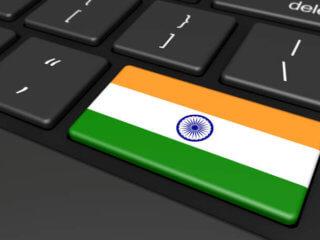
In 1998, getting posted as (probably the first) Deputy Secretary in (probably the first) Information Technology/Electronics Department (in the country) was an event by itself. Nara Chandrababu Naidu, (CBN) as the most techno-savvy CM of Andhra Pradesh, was pushing hard for the application of IT (Information Technology) in his SMART (Simple, Moral, Accountable, Responsive and Transparent) administration. He wanted to do computerization of all the 1124 Mandal( Tehasil) offices, 78 Revenue Divisional Offices, and 23 District Collectors' offices, and getting the data about all 6 Crore people in the state computerized and all of them given a unique number- a fore-runner of the present Unique ID number Adhar number in the shortest possible time, maybe a year!. He was a man in a hurry.
So Asok Kumar was appointed and made to take charge on 28/5/1998 as the first Project Director, Computerisation of Mandal Revenue Offices, Ex-officio DS in Revenue and IT departments, with the daunting responsibility to setup almost 3500 desktop-computers in the 1-server-2-clients configuration in all these Revenue department offices; to get the Multi-Purpose Household Survey (MPHS) data of 6 crore people in Andhra Pradesh collected earlier in 1995-96 verified using the staff of the Revenue department under District Collectors; then computerize the data and assign the unique SSID numbers to all individuals in AP. Using this computerized, verified, and certified database, which was one of the largest computerized databases in the world in the non-scientific domain at that time (1997-98), (database applications like db2, Oracle etc were offering their services free to showcase their capability to handle such large database) the caste certificates had to be issued to any individual seeking them!. (CBN showcased this project to Bill Gates when he visited Hyderabad during that period). In addition to getting the computer hardware- a server and two clients with printers and UPS- installed in all Revenue/Mandal offices, it was required to train adequate staff to facilitate the issue of the certificates! The installation of over 3,500 computers for over 80 million records in the MPHS database, developing customized software applications for diverse departments, and providing computer training to over 5,000 staff was a very daunting set of tasks assigned. This was the period when Windows-NT and DB2 database, Oracle 8i version of the software had just come into the market and having a dust-covered, big desktop computer (tower model was the ultimate) with 20 GB hard-disk and 256 KB RAM and the huge box-black and white/color-display monitor mounted on it seen on anyone's table was surely a sign of his/her importance in the official hierarchy! After much haggling with the CM and driving in the constraint in procuring (even availability of!) such a large number of desk-top computers in short time, the Phase-I was scaled down to verification, computerization and issue of SSID for all people in the state; and installation of computers and related hardware in 90 important Mandals, 72 RDO offices and 23 Collectorates by Aug 15,1998! ......
In 2002, on a curiosity experimental basis, introduced bio-metric attendance in Nizamabad Collectorate, with finger print scanner attached to an old PC. The staff were pleasantly surprised to see the automated Birthday wishes on their birthdays. Dial-Your Collector program introduced in Nizamabad in 2001 was a major step in getting the administration and people closer to each other. Since cell phones were not yet popular, the district was brought under Wireless network of Revenue department for easiness of administration. Monitoring the progress of the construction of Individual Sanitary Latrines on every alternate days, on wireless conferences with RDOs, MROs and MDOs was crucial for the success of Shubrata- the local scheme to build 1.40lakh+ toilets in Nizamabad in 2002. Dial Your Collector program was started in Kadapa also when he was posted as Collector Kadapa in 2005.
In 2008, as Managing Director, Hyderabad Metropolitan Water Supply and Sewerage Board (HMWSSB) experimented with digital technology in water supply and distribution sector. The first SCADA unit in metropolitan city to monitor supply of drinking water was set up in Hyderabad. This was very helpful to realise the dream of "daily water supply" in Hyderabad city after a gap of 24 years. The installation of GPS on water tankers to monitor their movements and the OTP system to ensure correctness of delivery were also the first in the country. Automatic Meter Readers were installed on commercial connections to reduce revenue losses. Going live on local TV channel every alternate Fridays for the popular one hour "Talk to MD, Water Board" program, could help in getting feedback from the people on the implementation of the Daily Water Supply scheme and also the quality issues in drinking water supply in Hyderabad.
In Ministry of Civil Aviation, biometric attendance was introduced from 1 Jan 2014, almost 8 months ahead of Adhar based bio-metrics attendance started by the central government. Under the guidance of the Sri Somasundaran, the then Secretary, MoCA, Asok Kumar was in charge of moving totally on to e-office in MoCA in 2014, much ahead of other government departments. As part of aviation security reforms, e-boarding passes and electronic check-ins were introduced in 2014-15.As CVO of AAI, e-procurement was made compulsory in all procurements and all cash transactions in airports in general aviation sector was banned and shifted totally to e-transactions in all Airport Authority airports.
Exhaustive dashboards to monitor the progress of works under Namami Gange was developed with the IT team of KPMG. Similarly, decentarlised dashboard to monitor the progress of "Jal Shakti Abhiyan: Catch The Rain" was developed with the help of NIC team. GIS mapped, geotagged inventory of all water bodies were created......


